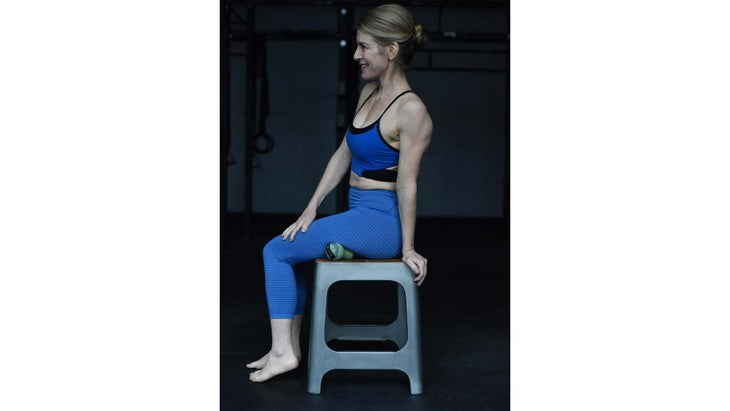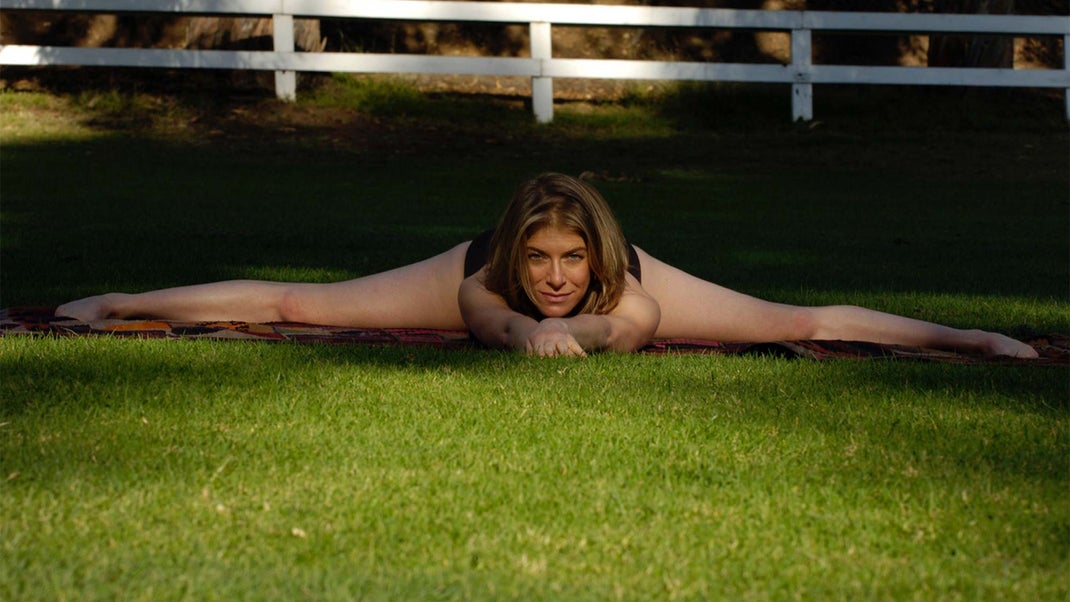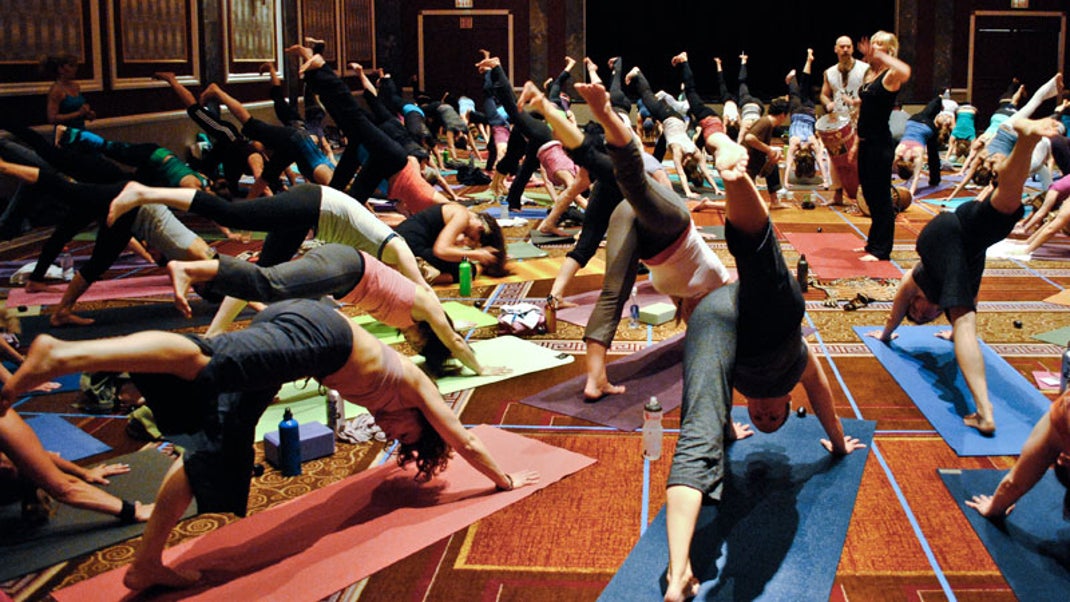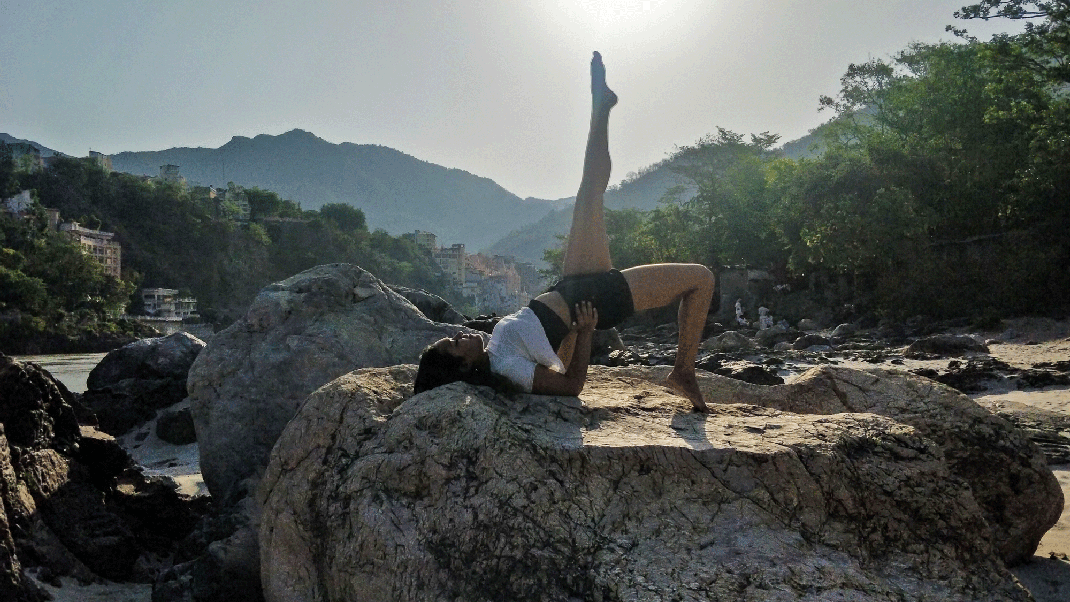In 2013, I was a happy and healthy 45-year-old woman. My life changed when my left hip started to hurt so badly that it woke me up at night. After months of pain, I went in for an X-ray and MRI scan – the results were shocking: Total Hip Replacement Surgery! In this blog post, I’ll share what Total Hip Replacement is all about from someone who has been through it firsthand.
When an X-ray technician tells me not to move for the next 20 minutes, I remind myself of the thousands of hours I’ve spent in Savasana. Staying still while my left hip is scrutinized by the MRI machine is the easy part. While my body appears calm, underneath my heart and head are screaming and my blood is pumping at such a high velocity, I feel like I could explode.
As the machine clangs, hums, and pounds its radio waves toward my bones, the decay begins to show itself. I’m here because I’ve had infrequent spasms in my tensor fasciae latae (a hip flexor) over the past several years, which I’ve always been able to resolve through movement. But lately, the spasms have been more frequent and sometimes painful. While I won’t know exactly what is happening with my body for a couple of days, I think my left hip knew that it had been really seen—finally—and let out its own sort of sigh of relief.
When I receive the MRI report, I know there will be only one option for me: total hip replacement. One week later, my affable surgeon greets me with the words, “So, when do you want to schedule your hip replacement?” I don’t shake, collapse, cry, or freak out. In fact, I think my hip knew this was the best option—that it was time to say goodbye to the body it had supported for 45 years.
How I Ended Up Needing a Hip Replacement at Age 45
I talk to my body frequently. In fact, I think of my yoga practice as an adventure of giving voice to all the parts of me, including the blind spots and bright spots.
I battled and survived anorexia nervosa and bulimia as a teen. Body dysmorphia haunted me through college, and yoga was the security blanket that I used to soothe my anxiety and depression. However, yoga also became the “pill” I relied on to “fix” my emotional pain. I didn’t feel safe in my own body unless I yoga’d it for hours every day. It was a ritual for me that allowed me to channel my focus, yet it also helped me numb myself from expressing the fears and anger that followed me like a shadow.
My earliest yoga practice was the Raquel Welch yoga video “Total Beauty and Fitness” at age 12. My first subscription to Yoga Journal was at 14. In high school, I found a local teacher (I lived in Santa Fe, so that was easy). In college in Chicago, I studied dance and performance while spending time at the Sivananda Center, an Iyengar studio, and practiced asana in my dorm room. During the summers, I worked at the Omega Institute for Holistic Studies, where I met my longtime yoga and meditation mentor, Glenn Black. My first Kundalini “awakening” happened at 19. All this to say, I was totally into the practice.
I was also that “bendy” girl that teachers would frequently call on to demonstrate poses. They used me like a balloon animal at a carnival, easily transforming my limbs. I loved it. I loved the feeling of my body remolding into shapes that brought new sensations and perceptions to the surface. I loved that I had a unique body that could resemble the poses pictured in Light on Yoga. I am extremely nearsighted, with the thickest glasses imaginable, and yoga gave me a way to see into myself by feeling my insides, especially once I moved beyond my eating disorder and started to heal.
My years of yoga and dance had made me extremely flexible. I had built a hypermobile body with my consistency of practice and created such joint laxity, I had a difficult time sensing where my limbs were in space. It wasn’t until I was at a bony stopping point within a range of motion that I could truly sense that I had reached my limit.
Over the years, I had stretched, meditated, and breathed my way out of feeling many of the messages from my muscles, fascia, and ligaments. Sure, my poses may have “looked” like they were on point, but those positions repeated day in and day out were not necessarily the best longevity choice for my structure. And the addictive drive behind my need to stretch was truly out of touch.
By age 31, my joints frequently cracked and popped, and pain paid a visit. I vowed to analyze my practice from an anatomical basis, and radically shifted the way I practiced. I began to tune up my body and it reversed my destructive path. But the damage was done, and 14 years later I would discover that wound.

My Hip Replacement—and How Yoga Helped Me Recover
On August 10, 2017, I met my orthopedist, who did a standard range of motion test on me. He rolled my hip around in the socket like it was a pinwheel in the breeze, looked at me, and said, “Well, there’s your pre-existing condition right there.” We mouthed the words at the same time: hypermobility.
My surgical team was awesome. My doctor marked my hip with a permanent marker, the team administered my anesthesia cocktail, and I held my husband’s hand until they took me away. I was awake in the surgery room for less than a minute, but remember taking expansive abdominal breaths to soothe my fears. Yet I also felt optimistic about the new chapter I knew I’d meet on the other side of the surgery.
In the months leading up to surgery, I “pre-tabbed” and prepared my hip and whole body to stay healthy and strong. I knew from my prior 14 years of remodeling my hypermobile body with Yoga Tune Up® corrective exercise and my studies in massage and fascia science that I would maximize my outcome by continuing to move my hip and keep its tissues strong and supple. I was not suffering from debilitating pain and was able to do strength training, Yoga Tune Up®, and Roll Model self-massage right up to my surgery.
Luckily, the surgery itself went very well. In fact, it felt immediately as though my healing would be more on the emotional side of things than on the physical. Sure, I had a lot of work to do when it came to improving my range of motion and addressing stiffness and restrictions in my hip. Yet what I realized in the days immediately following my surgery is that true healing happens on all levels—and different priorities of attention tend to bubble to the surface and demand I look at them at their own pace.
As I write this, I am nearly eight months post-surgery and can still say that the biggest challenge for me hasn’t been the physical work of recovery, but rather the shifts in identity that have accompanied acclimating to my new hip—and new thinking around my body’s potential. So much of my identity was wrapped up for years in priding myself on being a body-sense expert. The work I teach emphasizes proprioception (gross positional sense) and interoception (physiological sensing). It was with great humility that I, the “Role Model,” was walking around with a condition so severe it required a saw to remove it, and I didn’t even know it. But my lack of pain is also a testament to listening to other internal massages that told me to switch the way I practiced in my teens and twenties (which I believe set the stage for the degeneration) and transition to a more stabilizing practice. My current practice helped me maintain a mostly pain-free existence right up till the end.
I began teaching again after four months of rehab. Would I still be able to demonstrate poses? Would I have the endurance to teach eight-hour days? Turns out, the answer to both of these questions is yes. I’ve already taught in Canada, Australia, Texas, and my home state of California in these months since surgery. I see private students and teach regular classes. In fact, the hardest part isn’t my hip at all; it’s my two toddlers who often disrupt my sleep!
How My Hip Replacement Changed My Practice for the Better
My hip replacement has taught me that I am much more than the sum of my parts. It has also taught me to feel and express more of my emotions than ever before; to befriend pain as a complex informant; to be more empathic toward others suffering from pain and injuries; and to listen with my whole body, rather than just my ears.
These days, I realize that people may be puzzled by me, my body, and my story, and some have even slung insults my way. I get it, it’s not easy to hear that yoga practice was a player in shaping my diseased hip. But there is a generation of yoga practitioners who are filling the appointment books of orthopedists worldwide. We practiced with devotion, discipline, and dedication for decades. It doesn’t matter whether you were trained in Ashtanga, Iyengar, Sivananda, Kundalini, Power Flow, Bikram, Anusara, or any other style of yoga. The art of yoga asana can create positional wear and tear when not “dosed” correctly. I, like so many others, overdosed on certain poses—and my left hip paid a price.
I’m willing to own my past practice as harmful and risky, and name that it was a major contributing factor in my hip degeneration. And I’ve also built a practice in the past 14 years that has benefited thousands of practitioners. My deepest hope is that my story can prevent future surgeries. I also want my story to give hope to those who are facing surgery, and help them realize an operation like mine is not the end of your movement life, but rather can be a second chance at re-embodying your body.
About Our Writer
Jill Miller, C-IAYT, YA-CEP, ERYT, is the creator of Yoga Tune Up and The Roll Model Method, and author of The Roll Model: A Step-by-Step Guide to Erase Pain, Improve Mobility, and Live Better in Your Body. She has presented case studies at the Fascia Research Congress and the International Association of Yoga Therapists Symposium on Yoga Therapy and Research and is a former Yoga Journal anatomy columnist. She teaches her programs worldwide. Find out more about her story on Instagram @yogatuneup #TheRollReModel. Learn more at tuneupfitness.com.
Conclusion:
I hope my story can prevent future surgeries. I also want my story to give hope to those who are facing surgery, and help them realize an operation like mine is not the end of your movement life, but rather can be a second chance at re-embodying your body.




